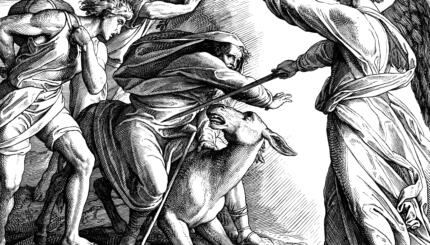Commentary on Parashat Sh'lach, Numbers 13:1 - 15:41
“Failure is impossible,” wrote Susan B. Anthony, certain that righteousness must eventually triumph. The road to that triumph, however, may be pitted with failures, the goal postponed longer than a lifetime. How, then, do activists stay active?
Parashat Sh’lach suggests an answer. The Israelites send spies over the border of the Promised Land; they return to give their wandering people an incoherent report of a good but deadly land full of giants. Only two spies maintain hope of crossing into the land and fighting to stay. The people, understandably confused and terrified, retreat from the challenge, and live out 38 hazardous years in the wilderness before trying again.
Moses’ instructive response contains an antidote to such debilitating panic. The Israelites and their descendants are to wear fringes on the corners of their garments, where unhemmed cloth begins to unravel, as a reminder to stay on course and not “run after your own eyes and your own hearts.”
Torah scholar Nitzhia Shaked explains the nature of these two distractions. “Our own eyes” refers to what we can learn by observation, often immensely demoralizing. “Our own hearts” refers to thought, and its supporting current of emotion. Thus in suspecting our hearts we are called on to examine how our fears and desires warp our perceptions.
Led only by our own eyes, we experience the limits of realistic hope for social change. History often provides evidence against our deepest wishes, with every instance of compassion balanced by an intolerable cruelty. Success becomes impossible when measured against a messianic ideal. Success is possible when measured more modestly, in lives saved, in suffering relieved, in justice established, instance by instance.
Led only by our own hearts, we get caught up in the heady ferment of partial success, and mistake the part for the whole, inviting painful disillusionment. The success of the civil rights movement was its failure, when millions of African-Americans discovered that legal equality ended neither racism nor poverty. The passage of laws protecting gay people can, as Urvashi Vaid points out, invite dangerous complacency among a still endangered minority. The signing of the Americans with Disabilities Act, a triumph for the disability rights movement, led to a decade of frustration as neither bureaucrats nor judges nor, most importantly, ordinary Americans, understood or enforced it as a civil rights law.
For a disliked and discounted minority, crossing into the promised land means more than the difficult work of legislative change and convincing judges. It requires creating public support for the movement’s goals. It requires a massive effort at communication.
The disability rights movement remains encouragingly clear about this. Disability publications, such as Ragged Edge and Mouth, regularly publish articles on ways to communicate, along with analyses of failures and successes in communicating. This self-critical attitude, which makes it possible to define and refine realistic goals and programs, is exactly what the Torah requires.
How can activists remain active? The Torah doesn’t tell us to ignore the evidence of our eyes or the urges of our hearts, but to expect messy limits, to look towards the place where our hopes unravel, and to turn our eyes and hearts back towards the reminders of our goals and ideals.
As the act of donning and looking at the fringes is repeated daily, so must be the tasks of resistance. Ours is not to complete the work, as our sages assure us, only to stay the course.
Reprinted with permission from SocialAction.com.
Torah
Pronunced: TORE-uh, Origin: Hebrew, the Five Books of Moses.



